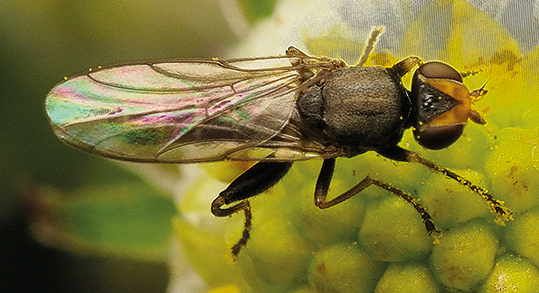Diptera.info :: Identification queries :: Diptera (adults)
|
Dipteran for id in Himalayas.
|
|
| DPD |
Posted on 10-08-2022 15:22
|
|
Member Location: Posts: 325 Joined: 20.03.17 |
-
DPD attached the following image:  [265.62Kb] |
|
|
|
| DPD |
Posted on 10-08-2022 15:22
|
|
Member Location: Posts: 325 Joined: 20.03.17 |
-
DPD attached the following image:  [192.25Kb] |
|
|
|
| Sundew |
Posted on 10-08-2022 15:32
|
|
Member Location: Berlin and Baden-Württemberg, Germany Posts: 3939 Joined: 28.07.07 |
Family Chloropidae, I think. |
|
|
|
| John Carr |
Posted on 10-08-2022 19:25
|
|
Super Administrator Location: Colorado, USA Posts: 10553 Joined: 22.10.10 |
The thick hind legs suggest Meromyza but I know of no species with that color pattern. |
| von Tschirnhaus |
Posted on 19-08-2022 12:20
|
|
Member Location: Bielefeld, Germany Posts: 454 Joined: 04.11.07 |
Chloropidae, Chloropinae: Pachylophus spec., an ovoviviparous Old World genus with 35 valid species, six occurring in two regions: Afrotropics 24, Australasia 5, Oriental 6, Palaearctic 5. Ovoviviparity may be a benefit in dry areas where after rain grasses are quickly growing, flowering and soon are wilting or being grazed off by ruminants, zebras, other steppe mammals and by grasshoppers [my speculation]. Two Pachylophus larvae develop in their egg shell at once and fill the whole abdomen of the female. After their birth (hind end first) the next pair of offspring starts their development (my observation on species in Afrotropical countries). Read the interesting paper of John Deeming (2018, Zootaxa 4482(1): 1-151).
Edited by von Tschirnhaus on 21-11-2022 19:31 |
| Jump to Forum: |













